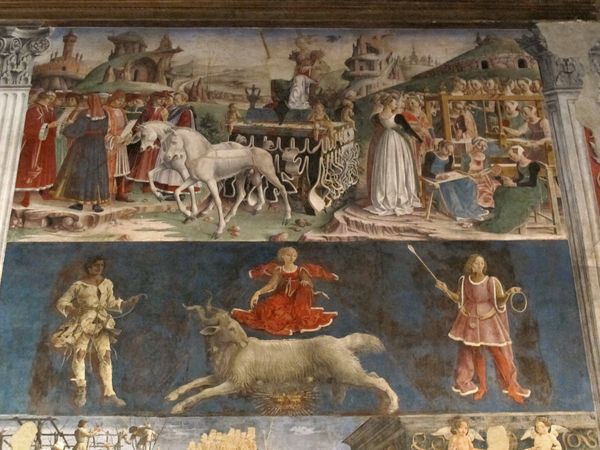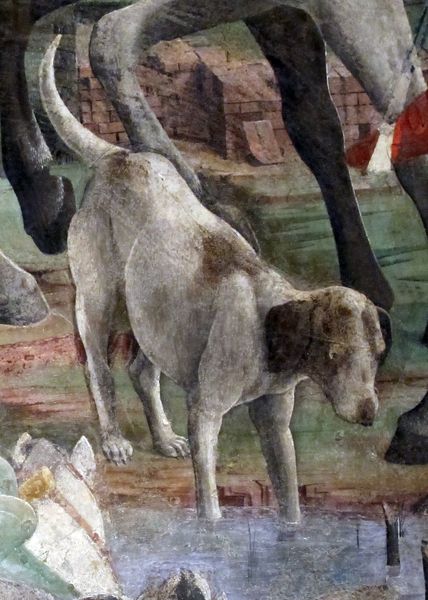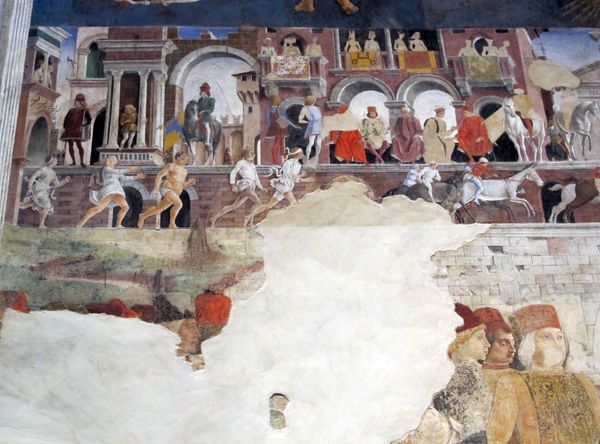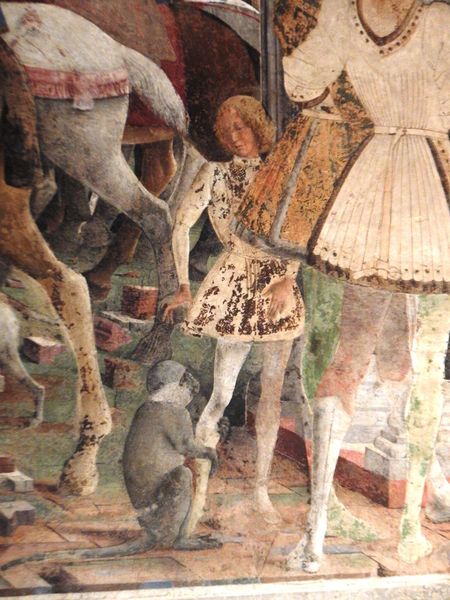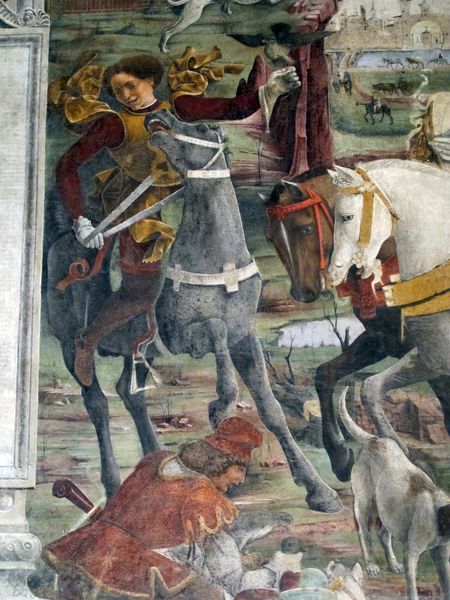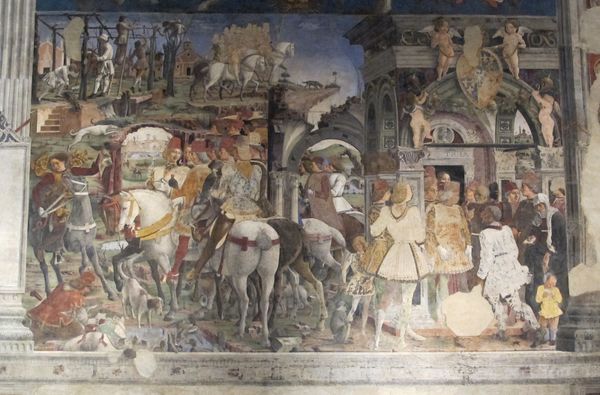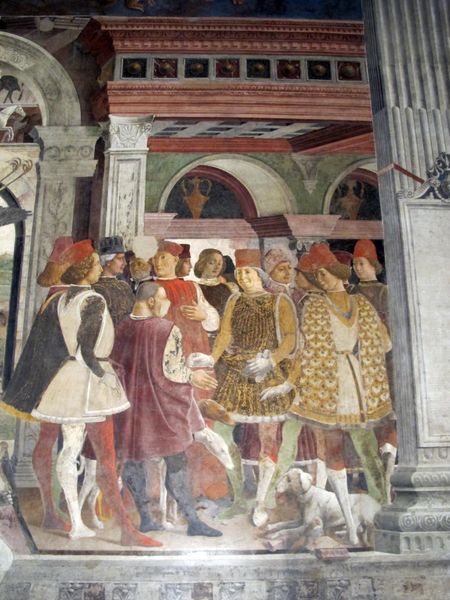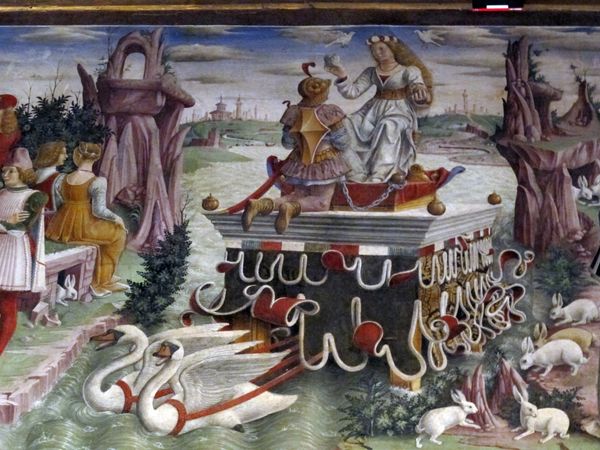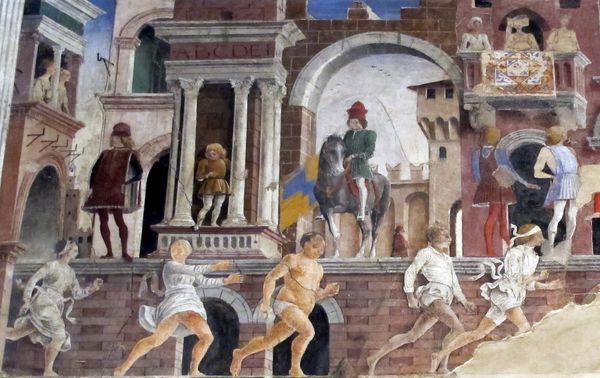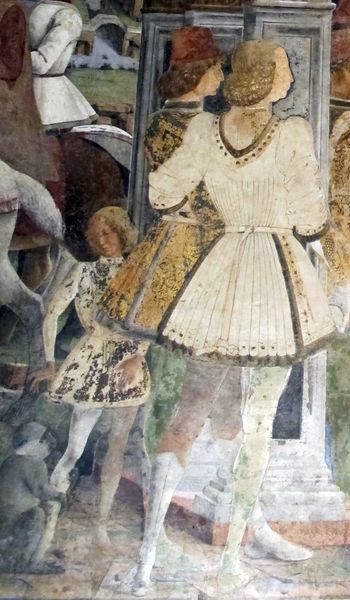
Allegory of March – Triumph of Minerva and Sign of Aries. Frescos in Palazzo Schifanoia (detail) 1470
0:00
0:00
fresco
#
allegory
#
landscape
#
painted
#
fresco
#
oil painting
#
underpainting
#
genre-painting
#
history-painting
#
italian-renaissance
Copyright: Public domain
This fresco detail is part of Francesco del Cossa’s “Allegory of March” painted in the Palazzo Schifanoia, a space of leisure and display for the ruling Este family. The artist shows us a courtly hunting scene. A figure in the foreground kneels attending to a slain animal. The context in which this work was produced and viewed is critical: Ferrara, a city-state in Renaissance Italy, was a place where courtly life, astrology, and humanist learning converged. Del Cossa was part of a burgeoning intellectual community that included poets, philosophers, and artists, and was patronized by the ruling Este family. How might we understand this hunting scene in terms of power, class and gender? It would be easy to simply see a depiction of aristocratic leisure, yet, it might be more productive to consider the ways in which displays of wealth are always also displays of dominance, a visual registering of social and class hierarchies. How does this fresco participate in a cultural system that normalizes the pursuit of pleasure as an entitlement of the ruling class?
Comments
No comments
Be the first to comment and join the conversation on the ultimate creative platform.
